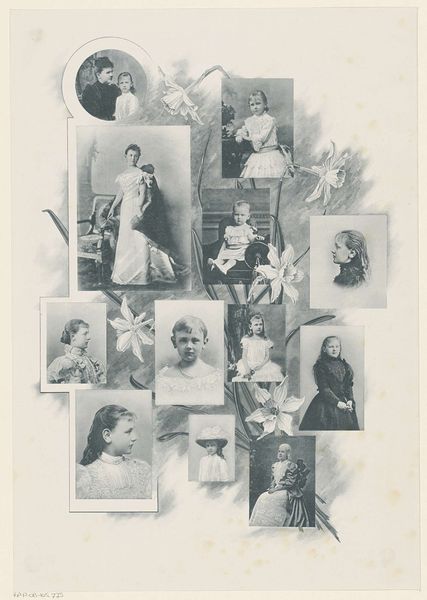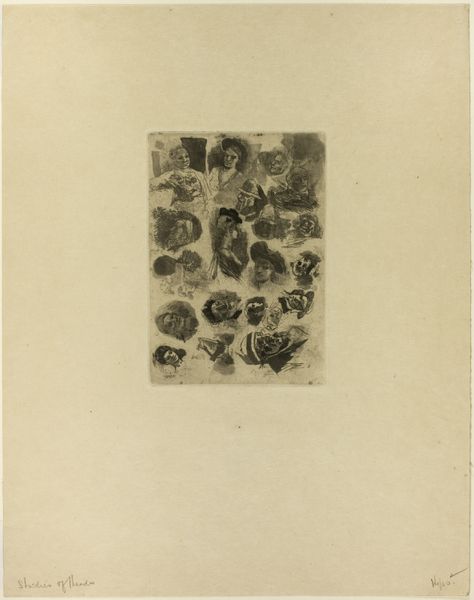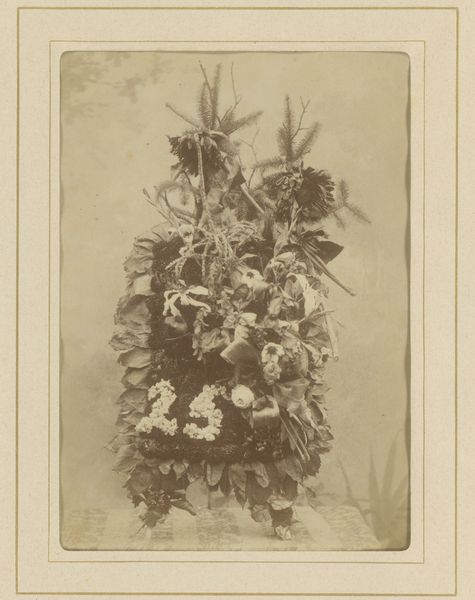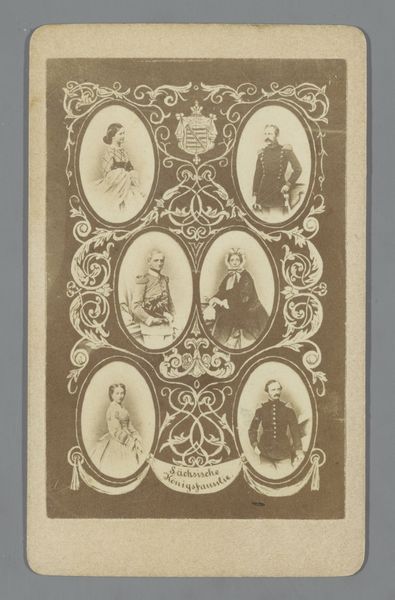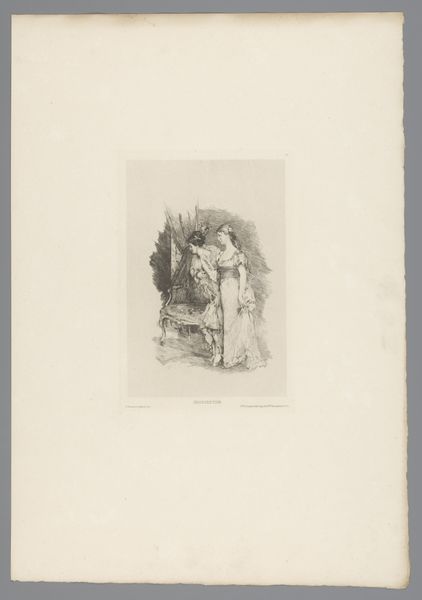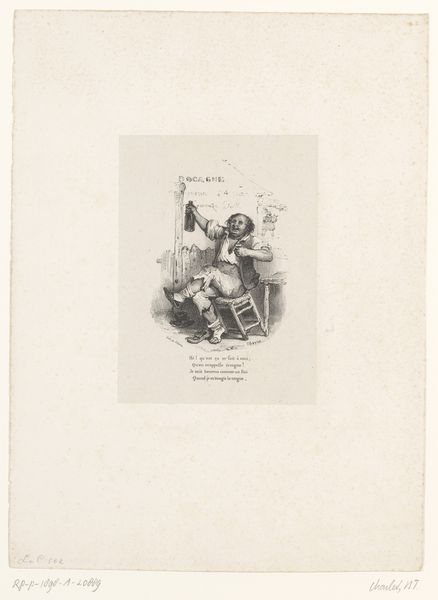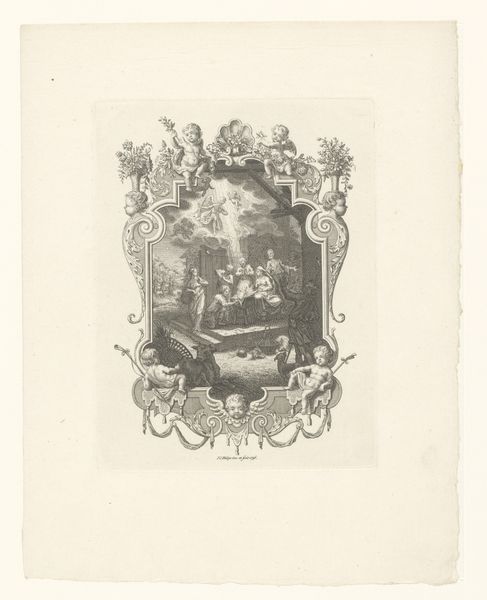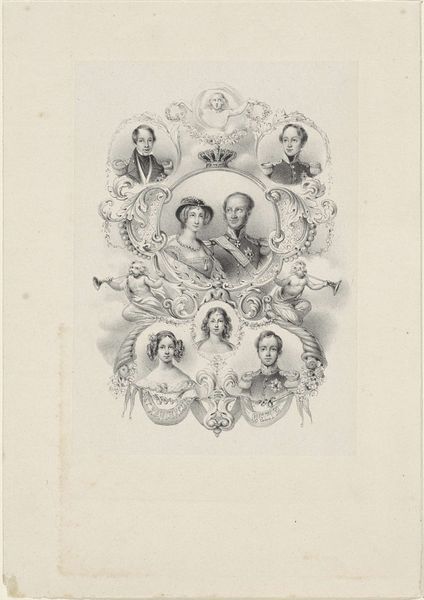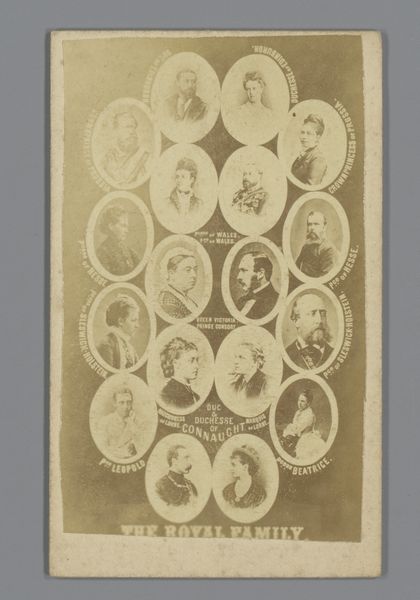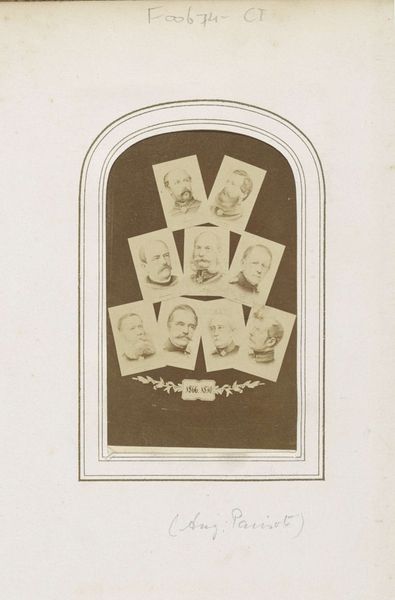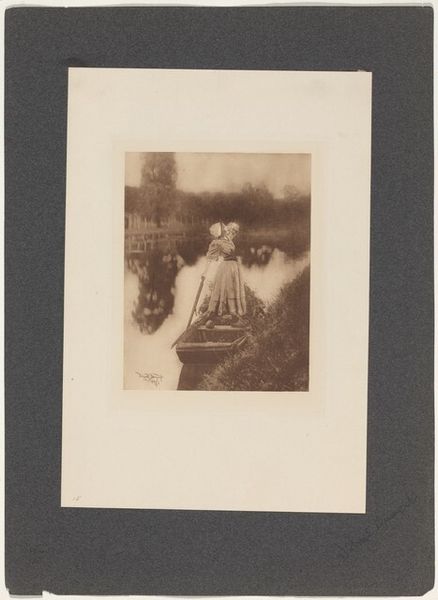
Portretten van Wilhelmina, koningin der Nederlanden, en Emma, koningin-regentes der Nederlanden 1897 - 1899
0:00
0:00
anonymous
Rijksmuseum
#
photo of handprinted image
#
rippled sketch texture
#
light pencil work
#
shading to add clarity
#
ink paper printed
#
old engraving style
#
etching
#
linocut print
#
pencil work
#
botanical art
Dimensions: height 495 mm, width 357 mm
Copyright: Rijks Museum: Open Domain
Editor: This is an interesting piece, entitled "Portretten van Wilhelmina, koningin der Nederlanden, en Emma, koningin-regentes der Nederlanden," made around 1897-1899 by an anonymous artist. It's currently housed at the Rijksmuseum. What strikes me are all of the different images and the almost ephemeral quality of the print, resembling an elaborate Victorian collage. How do you interpret the arrangement and its historical significance? Curator: It's indeed a striking visual, isn’t it? Beyond the Victorian aesthetic, it’s crucial to consider the context. Queen Wilhelmina ascended the throne in 1890 at the young age of 10 under the regency of her mother, Queen Emma. The composition, using photographs framed by roses, functions as carefully constructed propaganda. Who is represented here and who is left out? Editor: I see. It is curated. Each image projects an image of innocence and steadfastness for Wilhelmina, while Queen Emma represents a stabilizing, maternal presence. The rose wreaths add a layer of sentimentality... almost masking political ambition. Curator: Precisely. The very deliberate presentation works to legitimize Wilhelmina's reign but also highlights the anxieties surrounding a young woman ascending to power in a patriarchal society. What does it tell us about the performance of gender and power? Editor: It’s as though the creators wanted to ensure they would gain the public’s trust by emphasizing conventional beauty and feminine ideals, perhaps to overcompensate for her unprecedented authority. It also highlights the regent's power; they literally present and frame Wilhelmina's growth into a monarch. Curator: Exactly! So, how can we interpret this visual representation in light of evolving perspectives on gender, power, and representation within the monarchy? Editor: I see it now as a visual strategy that reflects the sociopolitical context and gendered expectations of the time. It reminds us how royal images were meticulously managed to negotiate shifting power dynamics. I hadn't thought of it as active "propaganda." Curator: Thinking critically about historical power structures in play reframes how we can see what seems to be a simple composition of portraits.
Comments
No comments
Be the first to comment and join the conversation on the ultimate creative platform.
